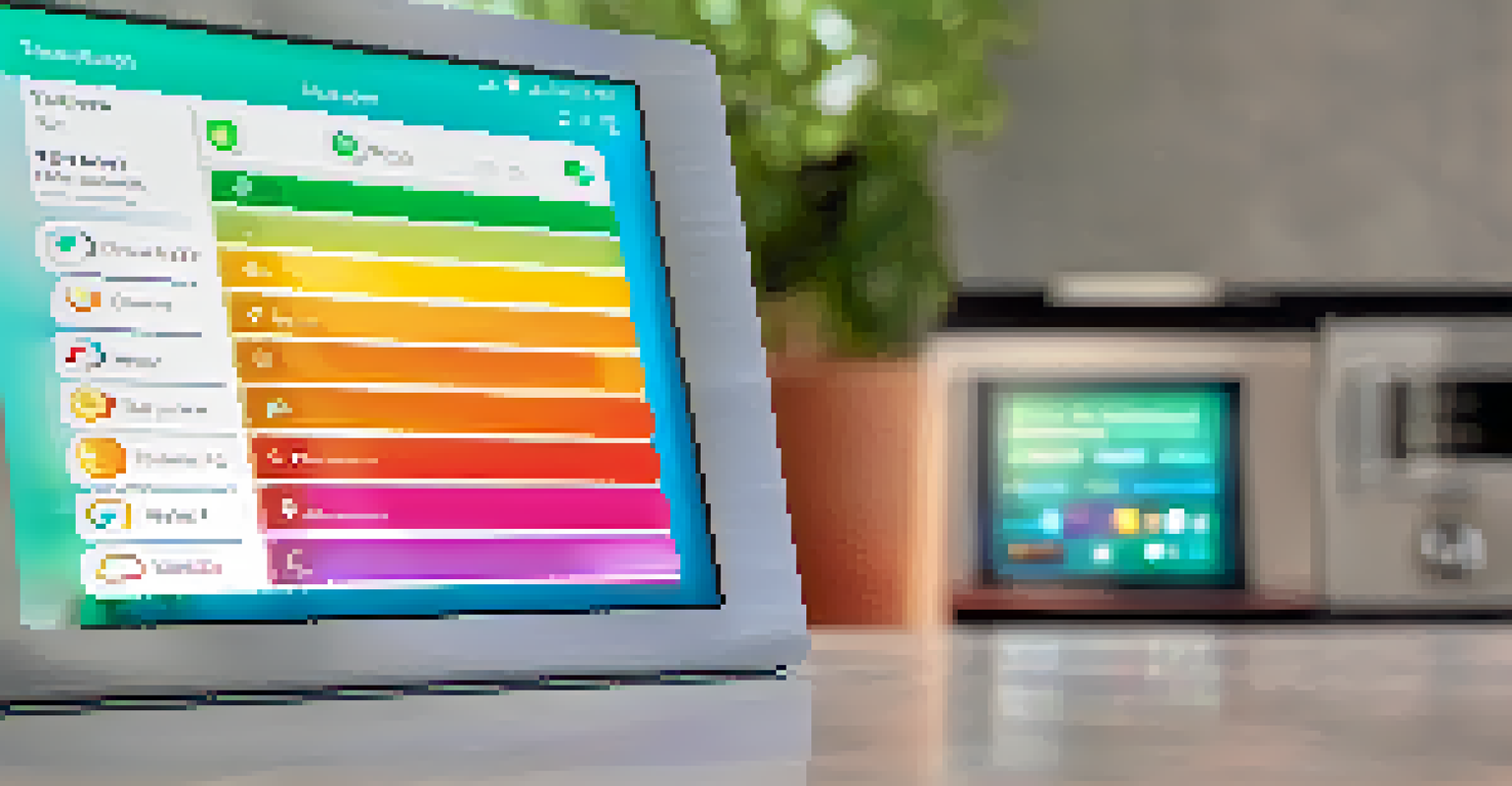Smart Home Hubs: Centralize Energy Management Efficiently

Understanding Smart Home Hubs and Their Purpose
Smart home hubs act as the central nervous system of your connected devices, enabling them to communicate and function together seamlessly. Think of a smart home hub like a conductor in an orchestra, ensuring that each instrument plays in harmony. By managing everything from lighting to thermostats, these hubs simplify your home automation experience.
The future is already here — it's just not very evenly distributed.
These devices often support various protocols, allowing different brands and products to interact effectively. This means you can control your home’s energy usage from a single app, giving you more convenience and control. Imagine being able to adjust your thermostat and turn off lights with just a tap on your smartphone.
By centralizing control, smart home hubs help reduce energy waste and improve efficiency. They gather data on your usage patterns, allowing you to make informed decisions about your energy consumption. In short, a smart home hub not only enhances comfort but also promotes sustainable living.
How Smart Home Hubs Contribute to Energy Efficiency
One of the primary benefits of smart home hubs is their ability to optimize energy usage across multiple devices. For instance, they can schedule when certain appliances run, ensuring that energy-intensive tasks are completed during off-peak hours. This is akin to setting your washing machine to run late at night when electricity rates are lower.

Additionally, smart home hubs can monitor energy consumption in real-time, alerting you to any unusual spikes. If your air conditioning unit suddenly starts using more energy, your hub can notify you, prompting you to investigate. This proactive approach helps you catch issues before they lead to increased bills.
Smart Hubs Simplify Home Automation
Smart home hubs act as a central system that enables seamless communication between various connected devices, enhancing convenience and control.
With user-friendly interfaces, these hubs enable homeowners to set energy-saving modes or create routines that align with their lifestyles. For example, you can program your lights to turn off automatically when you leave the house, ensuring that energy is not wasted. Ultimately, smarter energy management can lead to significant savings over time.
Integrating Smart Devices for Maximum Impact
To truly harness the power of a smart home hub, it’s essential to integrate compatible devices. This might include smart bulbs, thermostats, and even appliances that can connect through Wi-Fi or Bluetooth. The more devices you integrate, the more control you have over your energy usage, creating a cohesive ecosystem.
Energy efficiency is not just a policy for tomorrow; it is an investment in our future.
Consider a scenario where your smart thermostat communicates with your smart blinds. When the temperature rises, the thermostat can instruct the blinds to close, reducing the need for air conditioning. This synergy not only enhances comfort but also conserves energy, showcasing the potential of a well-integrated smart home.
Moreover, many hubs allow for voice control through smart speakers, making it even easier to manage your home’s energy consumption. You can simply say, 'Turn off all lights,' and the hub will ensure that everything is powered down. This level of convenience encourages more mindful energy use, helping you to stay on top of your habits.
User-Friendly Interfaces Enhance Energy Management
Most smart home hubs come equipped with intuitive interfaces that make managing energy consumption straightforward. Users can easily navigate settings, monitor usage, and create schedules without needing a tech degree. This accessibility empowers everyone in the household to participate in energy management.
For example, a family can set different preferences for various times of the day, ensuring that energy is used efficiently while still accommodating their routine. If you have kids at home, teaching them how to use the hub can instill good energy habits early on. Think of it as a family project that promotes sustainability.
Energy Efficiency Through Integration
By integrating multiple smart devices, hubs optimize energy usage and automate routines, leading to significant cost savings.
Many hubs also offer mobile apps, allowing you to control your home from anywhere. Whether you’re at the office or on vacation, you can check your energy usage and make adjustments as needed. This level of control not only saves money but also gives peace of mind, knowing you’re always in charge of your energy consumption.
The Role of Automation in Energy Savings
Automation is a key component of smart home hubs that leads to enhanced energy efficiency. By programming routines, you can set your devices to operate at optimal times without manual intervention. For instance, your hub could automatically lower your thermostat at night while you sleep, ensuring comfort without wasting energy.
Additionally, automation can help avoid human error, which is often a significant factor in energy waste. Forgetting to turn off lights or appliances can lead to unnecessary costs, but with automated settings, those oversights are minimized. It’s like having a diligent assistant who ensures everything runs smoothly.
The possibilities for automation are vast. From scheduling your coffee maker to start brewing just as you wake up to ensuring your garden irrigation system operates only during cooler hours, the choices are endless. This proactive approach can significantly reduce energy bills while enhancing your daily life.
Monitoring and Analyzing Energy Usage Trends
Another significant advantage of smart home hubs is their ability to provide insights into your energy consumption patterns. By tracking usage over time, these devices can reveal trends that might otherwise go unnoticed. For example, you may discover that your energy consumption spikes during certain months, prompting you to adjust your habits accordingly.
Some hubs even offer detailed analytics, showing you which devices consume the most energy. This information is invaluable for making informed decisions about upgrades or replacements. If your old refrigerator is a major energy hog, you might prioritize replacing it to save on future bills.
User-Friendly Interfaces Empower Users
Intuitive interfaces and mobile apps allow homeowners to easily manage energy consumption, making it accessible for everyone in the household.
Understanding your energy usage not only aids in cost savings but also supports environmentally friendly practices. By recognizing areas where you can cut back, you contribute to a more sustainable future. This awareness transforms energy management from a chore into a conscious lifestyle choice.
Choosing the Right Smart Home Hub for Your Needs
When selecting a smart home hub, consider compatibility with your existing devices. Not all hubs support the same protocols, so it's essential to choose one that integrates well with your current setup. This ensures you can maximize the benefits of your hub without needing to overhaul your entire system.
Additionally, look for features that align with your energy management goals. Some hubs may offer advanced analytics, while others focus on user-friendly interfaces or automation capabilities. It’s like shopping for a new car; you want to ensure it has the features that suit your lifestyle and needs.

Lastly, consider the scalability of your chosen hub. As technology evolves, you may want to add more devices or upgrade existing ones. A good smart home hub will allow for this expansion without compromising performance. This forward-thinking approach ensures your energy management system remains effective for years to come.